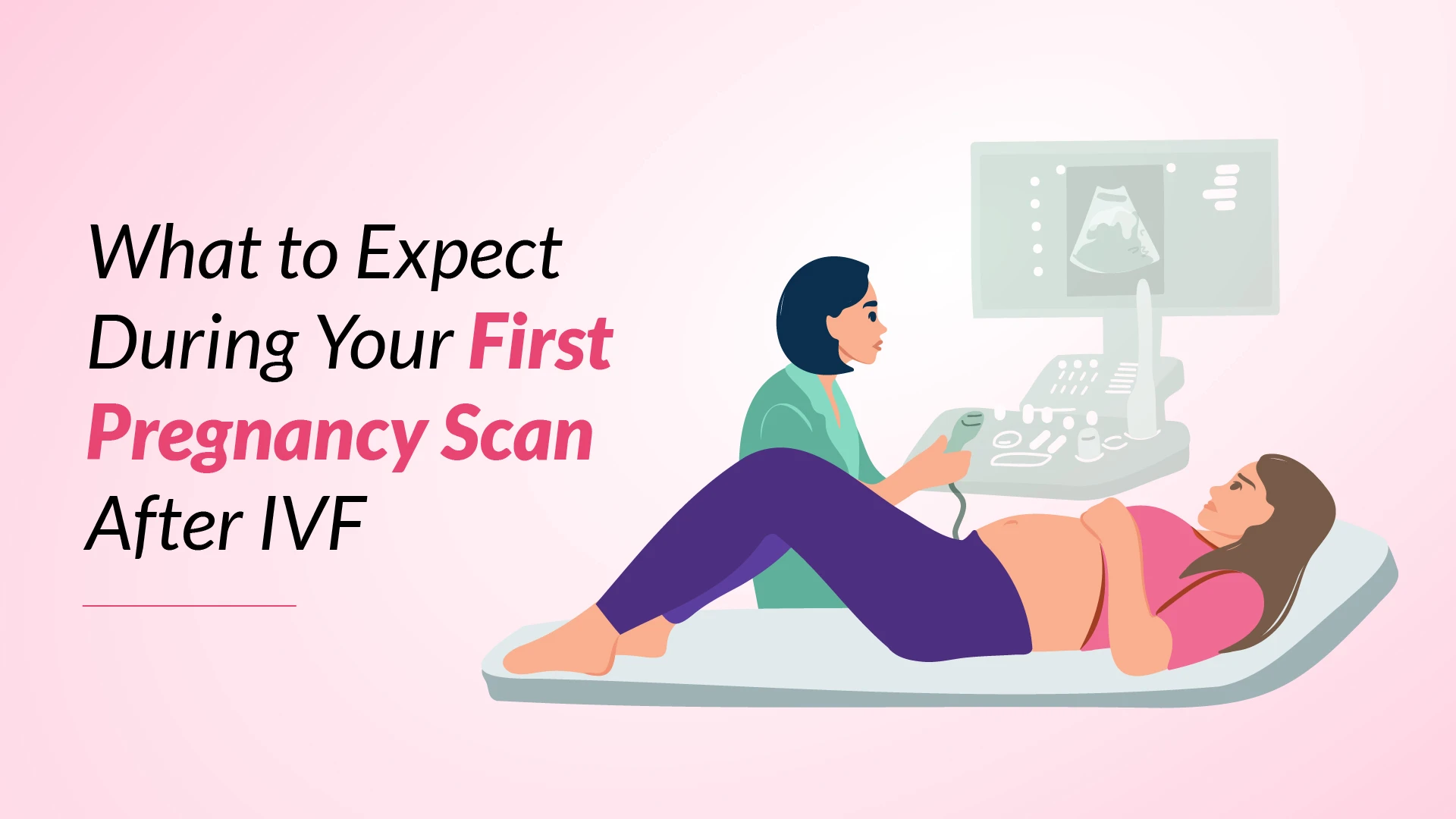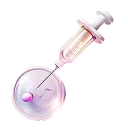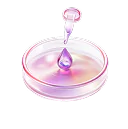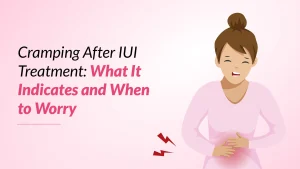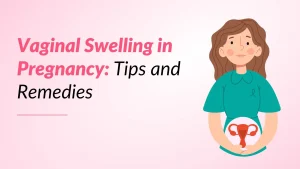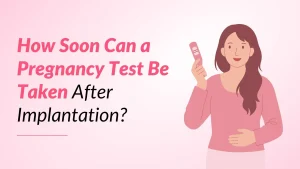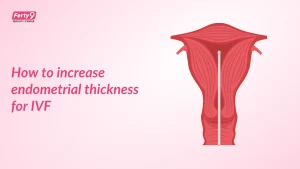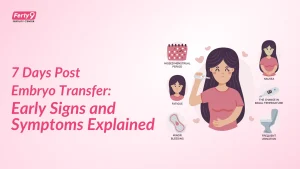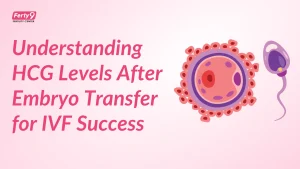While childbirth is a deeply desired experience for many parents, unforeseen drawbacks can sometimes pose challenges. But many of these challenges can be effectively overcome with the help of IVF (In Vitro Fertilization) wherein the eggs are fertilized with the sperms in the lab and the resultant embryo is transferred back into the womb of the expectant mother. Embryo transfer is the final and rate limiting step for the success of an IVF program. It needs utmost skill and is one of the factors that determines the chances of conception in an IVF cycle. Several steps are involved to optimize an embryo transfer.
In this article, lets learn about embryo transfer, the procedure, and its role in leading to a successful pregnancy.
Also Read: Embryonic Development: Exploring the Journey from Conception to Birth
Role Of Embryo Transfer In Fertility Treatments
Embryo transfer is a part of a delicate IVF procedure that needs experienced physicians and embryologists to ensure a successful conception. The complete IVF cycle depends on the embryo being placed correctly in the endometrial cavity without causing any trauma.
After the whole IVF cycle, if an embryo transfer is successful, the embryo will attach to the uterine wall, leading to pregnancy. Sometimes, multiple embryos (a maximum of two) are transferred to the endometrial cavity to ensure at least one attaches to the uterine wall. However, this can also lead to multiple pregnancies in favorable conditions.
Different types of embryo transfer include-
- Fresh Embryo Transfer: Is when the embryos are transferred back into the uterus in the same cycle as the oocytes are retrieved. It can be done if the hormone levels in the body are within range and uterine lining is favorable.
- Frozen Embryo Transfer: This procedure includes freezing and preserving the healthiest embryos for use in the subsequent cycles when the endometrium is prepared for the transfer. Cryopreserved embryos can even be used for the subsequent pregnancy.
Preparing For Embryo Transfer
Embryo transfer is a delicate procedure, and even the slightest difficulty can fail the cycle. That’s why preparing for the cycle is crucial for women, and yes, there are precautions, dietary restrictions, and medications that you might need to adopt.
Basic preparations to increase embryo transfer success rate:
- Prioritize Testing: Getting tested for few hormones in your body is essential for a successful pregnancy. Women need to go for hormone profiling (Estrogen, Progesterone) and transvaginal scans for assessment of the endometrial thickness and blood supply
- Check For Hydrosalpinx: a transvaginal ultrasound can also rule out hydrosalpinx. It represents fluid present in one or both of the fallopian tubes, often related to previous sexually transmitted diseases. If you have it in your body, it can affect the transfer as the fluid is toxic to the embryos.
- Take Your Medications Seriously: Medications are prescribed to improve the chances of implantation. These include hormones like estrogen and progesterone, folic acid, Vitamin D and some blood thinners which need to be taken diligently
Related Read: Preparing for embryo transfer Do’s and Don’ts
The Embryo Transfer Procedure
The procedure for an embryo transfer is the most important part of assisted reproductive technology (ART) that helps couples achieve a successful pregnancy. Here is an overview of the complete IVF procedure.
- Ovarian stimulation with injections
- Retrieving The Healthy Egg (Oocyte Retrieval)
- Fertilization in the lab
- Development And Selection of Embryos
- Embryo Transfer
- Embryo Preservation (Saved only for future use or research with consent)
- Post-Transfer Care
Suggested Read: The Four Stages of Embryonic Development
Preparation Of The Uterine Lining
Uterine line preparation, also known as endometrial preparation, is a crucial step during the IVF cycle. Preparation of the uterine line helps create an optimal environment for embryo transfer in a woman’s uterus that can lead to pregnancy.
- At first, a professional assessment is given to check the current state of the uterine lining.
- A hormonal stimulation is done to increase the growth and development of the uterine lining.
- Estrogen therapy may be prescribed, as estrogen helps thicken the endometrium and improves its growth.
- Progesterone may also be prescribed, as it helps prepare the uterine lining and provides an ideal environment in the uterus for a fertilized egg or embryo.
- Continuous monitoring and care to ensure the health of the womb.
Embryo Selection And Grading
Selecting and grading the healthiest embryo for transfer is a crucial step in ART techniques, particularly in IVF procedures. Once the eggs are fertilized and form embryos, they are cultured in the lab to reach a certain level of growth. The most healthy embryo is then selected to be transferred into the woman’s uterus.
The selection and grading of embryos include the following steps, which increase the chances of you getting pregnant.
- Assessing the embryos.
- Embryo grading (symmetry, overall size, appearance, and fragmentation)
- Selecting one or more viable embryos.
The Embryo Transfer Process
Embryo transfer is an office procedure. Patient can walk in with no restrictions of food intake. Procedure is done in the lab as the embryos are extremely sensitive and lab environment needs to be suitably maintained for their survival. Patient is asked to keep their bladder partially full for better visualization of the uterus on scan.
After carefully loading 1 or 2 embryos into the transfer catheter, the embryologist hands it to the doctor. The doctor then performs the embryo transfer (ET) procedure, gently inserting the catheter into the uterus under ultrasound guidance.. Slowly the embryos are dropped into the womb at a place most suitable for implantation. The embryologist then confirms the completeness of the procedure by checking the catheter post transfer.
Also read: Advanced IVF Fertility Labs: What’s New at Ferty9?
What To Expect During And After Embryo Transfer?
During Embryo Transfer
A fertility specialist starts the embryo transfer with a catheter. They transfer the fertilized egg/ embryo into the uterus through the cervix. The transfer is carefully monitored with ultrasound imaging. The procedure is often painless, while there can be an exception of mild cramping.
After The Embryo Transfer
Once the embryo transfer process is completed, your fertility doctor might prescribe progesterone supplements to increase the chance of pregnancy.
After embryo transfer, the embryo hatches out from its shell and continues its development by dividing and expanding. Then the embryo starts undergoing the process of attachment, and then implantation begins to take place. This process is designated as a fusion, and sticking of an embryo to the endometrium is called ‘apposition,’ ‘adhesion,’ and ‘invasion.’ Some could experience this as just mild abdominal cramping issues and discomfort and sometimes mild spotting of blood.
Post-Transfer Care And Recovery
After embryo transfer, precautions are prescribed to increase the chances of pregnancy. Here are some precautionary habits you should adopt post-transfer. These precautionary activities can improve all the natural processes and optimize the chances of a successful pregnancy.
- ● Prioritize rest and relaxation though complete bed rest is not recommended
- ● Avoid lifting heavy weights.
- ● Manage medication’s timing and cycles.
- ● Monitor post-transfer symptoms.
- ● Seek emotional support and try to be calm and stress-free
Also Read: What to Do Before and After Embryo Transfer?
Two-Week Wait: Managing Expectations
The two-week wait time is a popular term used for the precautionary and post-transfer care period. This interval depends on the type of embryo transfer a woman undergoes, which can last between 9 and 14 days. During the two-week wait time, a woman might have to take precautions, like eating healthy food, getting adequate sleep and rest and steering clear of alcohol and smoking.
Further, a woman can continue working out, but now might not be the right time to start a new intense training regime. However, managing daily activities can promote the chances of pregnancy.
Pregnancy Testing And Follow-Up
Roughly 2 weeks after the embryo transfer, you might be called for a screening or a pregnancy test. This includes blood testing, which checks for HCG (Human Chorionic Gonadotrophin) in your blood. It’s a hormone that starts to get released in a woman’s blood as the embryo attaches to the uterine lining, and pregnancy is induced.
Once the pregnancy is confirmed, regular check-ups and tests for blood and urine are prescribed to ensure the health of the pregnancy.
Related Read: How Soon Can a Pregnancy Test Be Taken After Implantation?
Emotional And Psychological Support
Emotional support will have positive effects on a woman’s body and reduce the risks of post-transfer symptoms. Psychological support includes professionals who have a special skill set in maternal care. They can alleviate distress and improve your lifestyle.
When a woman goes through fertility treatment, she requires the utmost psychological support. Catering to that need, an established and transparent fertility clinic provides a group of dedicated counselors. They take care of therapeutic counseling, emotional support, and informative decision-making.
Conclusion
Embryo transfer is a pivotal step in inducing pregnancy and helps a couple overcome their infertility issues. This procedure takes a substantial amount of expertise and care from embryologists, senior and junior doctors, and all the healthcare professionals involved in the treatment.
From preparation to post-embryo transfer care and recovery, a woman needs to prioritize her medications and precautions for a successful conception. In the end, it’s crucial that you measure a clinic’s transparency in treatments and charges to avoid any future complexities.







